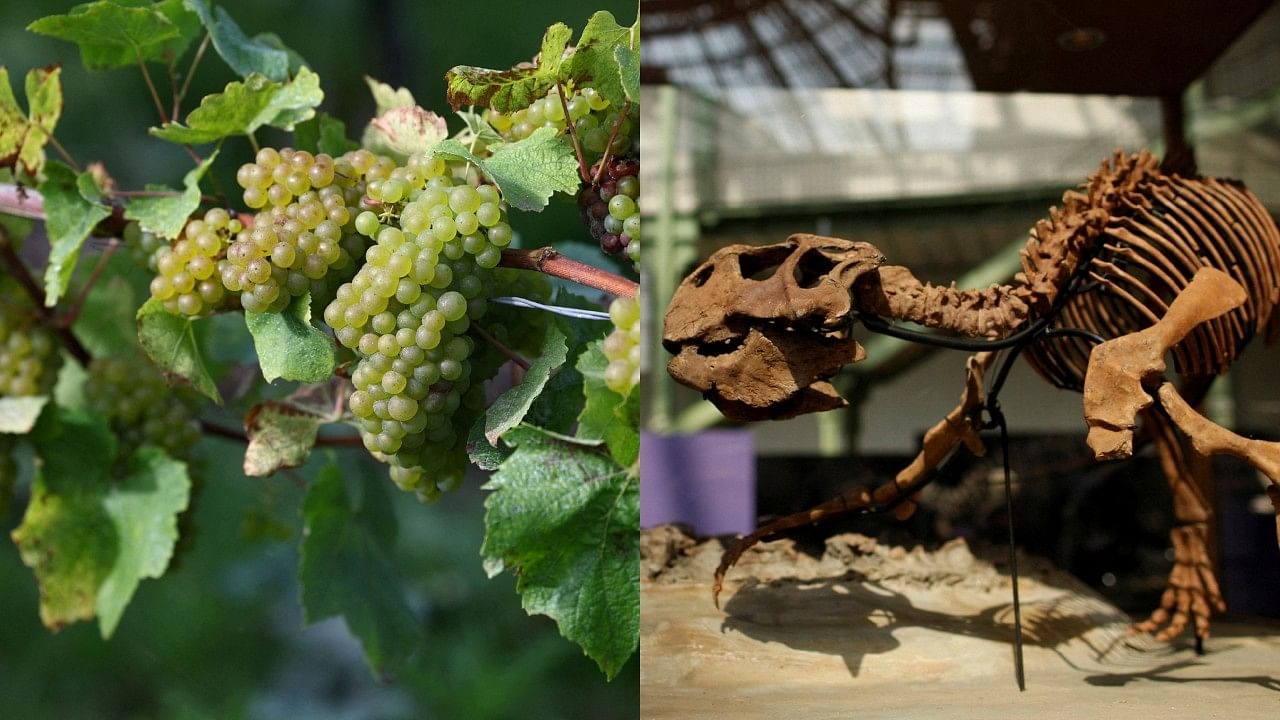
(L to R) Grapes; Dinosaur fossil.
Credit: Reuters Photos
A team of scientists and curators at Chicago's Field Museum of Natural History recently hinted that it is the extinction of dinosaurs that helped the grape species (Vitaceae Juss) grow globally. The curators concluded so after finding grape seed fossils as old as 60 and 19 Ma (million years ago), during excavation in the Andean region of central Columbia.
The team from the Chicago museum used the fossils and identified nine new species of grapes from Peru, Columbia, and Panama— that they claim grew comparatively slower when dinosaurs strolled the forests. “This discovery is important because it shows that after the extinction of the dinosaurs, grapes really started to spread across the world,” Interesting Engineering quoted Fabiany Herrera as saying.
Herrera, who is an assistant curator of paleobotany at the Chicago museum and lead author of the paper published in Nature journal, said that the oldest grape seed fossil was found in India 66 million years ago. He pointed out that grapes have an excellent fossil record dating back 50 million years ago.
“These are the oldest grapes ever found in this part of the world, and they’re a few million years younger than the oldest ones ever found on the other side of the planet,” he said while referring to the grape seed fossil the team found in the Andean region.
The research team also claimed that when a mass extinction event like the one during the time of dinosaurs happens— the earth is shaken, and this might have led to trees and plants hypothesizing death of dinosaurs catalyzed the changes in forests.
Mónica Carvalho, a co-author of the paper and assistant curator at the University of Michigan’s Museum of Paleontology said, “Large animals, such as dinosaurs, are known to alter their surrounding ecosystems. We think that if there were large dinosaurs roaming through the forest, they were likely knocking down trees, effectively maintaining forests more open than they are today."
The scientists further predict that with absence of dinosaurs, various species of plants and trees, including grapes grew drastically into large canopy structures, making such forests dense. “In the fossil record, we start to see more plants that use vines to climb up trees, like grapes, around this time,” said Herrera.
The scientists examined the grape seed fossil using CT scans to unearth and study their interior structure. They claimed that the fossils’ form, size, and other morphological characteristics showed they belonged to a new grape species.
“The fossil record tells us that grapes are a very resilient order. They’re a group that has suffered a lot of extinction in the Central and South American region, but they also managed to adapt and survive in other parts of the world,” Herrera added.